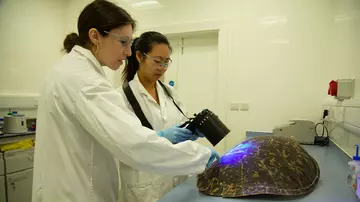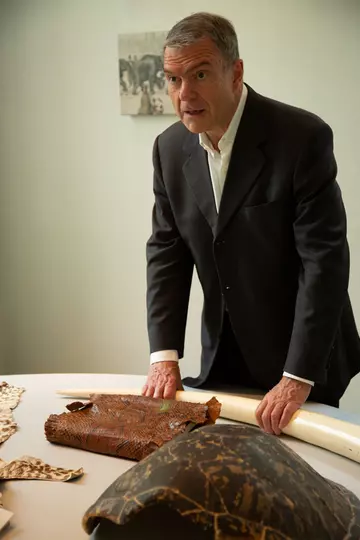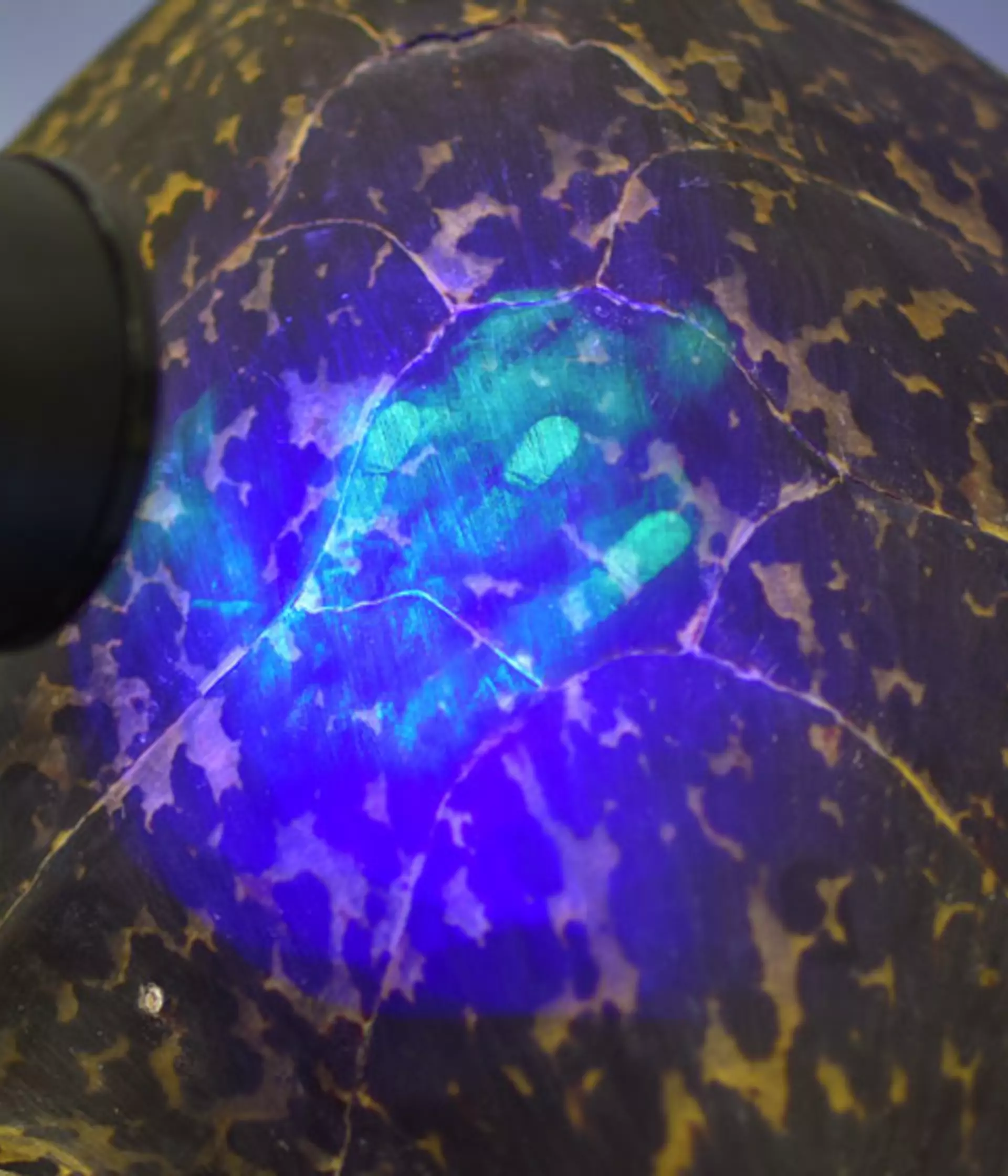
ZSL
Zoological Society of London
The crime scene can be as small as a pangolin scale or as light as a feather, but thanks to ground-breaking new research from ZSL, wildlife criminals will soon have nowhere to hide.
In this Q&A session, ZSL researchers Louise Gibson and Alex Thomas reveal how they’ve swapped their lab coats for trench coats, tackling the illegal wildlife trade with some very CSI-style detective work…
ZSL is using some very surprising tools to tackle the illegal wildlife trade – how did this all start?
Alex: In 2018, ZSL partnered with the University of Portsmouth to trial the lifting of fingerprints from the smuggled scales of pangolins - the most illegally-trafficked mammal on earth. The trial - which involved working with samples as small as an inch long - was a success, creating a new wildlife crime investigation tool to help combat the poaching and trafficking of wild animals
We decided to take the pangolin scale trial one step further and use the latest in modern forensic techniques to try to extract human DNA from three smuggled items; a crocodile skin bag, an ivory hair comb and a bird feather – all of which were confiscated by UK Border Force after being illegally brought into the country.
Louise: Alex knew that my background prior to joining ZSL was in police forensics, which meant I was well versed in crime scene investigation - she invited me to support the project and I thought it would be fun to dust off my forensic hat and apply it to my current working environment, so I agreed to get involved!
How did you go about the trials?
Louise: ZSL volunteers handled the items, depositing fingerprints and DNA in the process, and after experimenting with different DNA extraction techniques, we worked with Liverpool John Moores University on the analysis and were able to produce a complete profile for matching, which was very encouraging.
Alex: We also trialled a new form of fingerprint lifting, using something called a Forenscope, borrowed from forensic service providers Scenesafe: It’s portable, discreet and doesn’t require the use of powders which can leave conspicuous traces – perfect for on-the-ground analysis in what are quite often dangerous environments. This also had positive results, so our arsenal of wildlife crime-fighting tools is now growing.

How will this tackle the issues surrounding the illegal wildlife trade?
Alex: There are so many different forensic techniques available for investigators examining traditional crime scenes, but lifting fingerprints and DNA from small pieces of organic material filled with ridges and bumps takes a lot of trial and error to see what works best.
Turtle shells, crocodile skins, rhino horn – they’re all unique crime scenes in their own right, so it’s a matter of adapting the methods used in traditional forensics to discover what would work best for each, especially in the challenging environments ZSL’s wildlife crime-fighters operate in.
What are your hopes for the future?
Alex: The project is very much ongoing – we need to find the best forensic methods to lift fingerprints and extract DNA from each specific trafficked item, so that these techniques can be deployed all over the world. The most effective DNA extraction method for a pangolin scale will be different to the one that works best on an elephant’s tusk.
Louise: ZSL works across the world creating and deploying new technologies and rolling out in-country training to combat the illegal wildlife trade. To be able to, for example, supply forest rangers and border force personnel with a toolkit that can be discreetly, quickly and cheaply used in on-the-ground investigations - without leaving a trace - will be a vital part of tackling this well-organised criminal enterprise. These tools already exist, so adapting them for tackling the illegal wildlife trade is the obvious next step.
Alex: By building up a detailed bank of fingerprint and DNA analysis, and by sharing this with forest guards, police forces and customs officials around the world, we can start to build up a picture of smuggling routes, the number of people involved and the key individuals taking part: this kind of intelligence gathering will be the key to finally breaking down these networks, which are threatening to wipe out critically endangered species across the globe.

Louise: There’s more research to be done, but with so many of our collaborators as committed to tackling the issue as we are, we’re confident that one day there will be nowhere for these criminal enterprises to hide.
Your donations help us tackle a range of threats to wildlife across the world through science, education and conservation.
